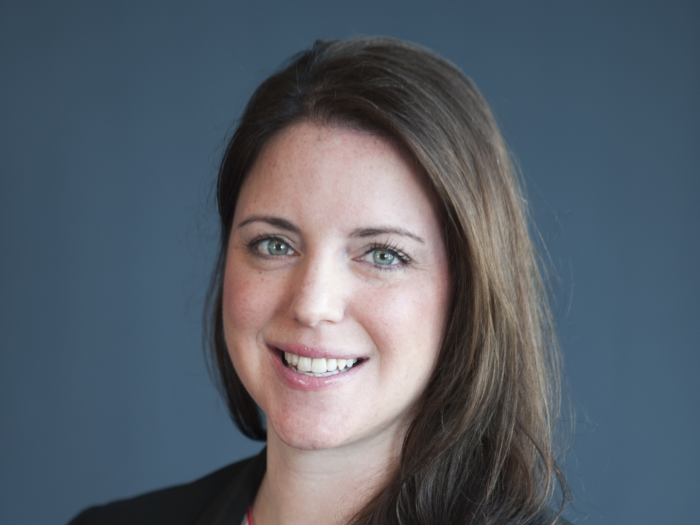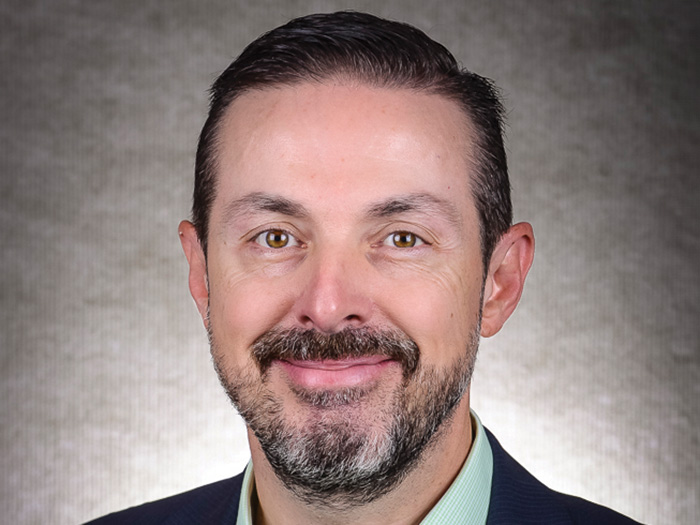Rising Star Jacqueline Quintal Shares How She Keeps Pace with Rapid Changes in Finance


Come see the Stars! As part of our ongoing coverage of the best brokers in the commercial insurance space, Risk & Insurance®, with the sponsorship of Philadelphia Insurance, is expanding its coverage of the Rising Stars — those brokers who represent the next wave of insurance brokering talent.
Look for these expanded profiles on the Risk & Insurance website and in your social media feeds, now and continuing into 2023.
Here’s our conversation with Jacqueline Quintal, managing director and digital asset leader at Marsh, and a 2022 Finance Power Broker finalist and Rising Star.
Risk & Insurance: What led you to specialize in brokerage solutions for financial institutions?
Jacqueline Quintal: It was a combination, really, of interest and probably a bit of situational good luck. Early in my career, I had a large asset management client that had a new risk manager who was very detail-oriented, very coverage-focused.
As he dug into trying to figure out his complex program, I, as a relatively junior person, was arguably the easiest one to get on the phone. I didn’t know the answers to all of his questions but would work with the team to get him responses, which helped me develop technical expertise.
It was really through that experience I got a quick deep dive into what certain insurance buyers care about and what they think about nuanced coverages.
From there, I was like, “Oh, this is actually really interesting.” It’s a little more complicated in some ways than non-financial institution programs, with lots of different complexities by subsector or type of business or type of risk.
I really started to seek out financial institution accounts to work on and then ways to learn the business better — both from an insurance perspective and in understanding my clients’ businesses. I went back to school and got an MBA in finance; doing so while still working really enabled me to apply what I learned in real time.
Over time, I ended up working exclusively on financial institution business. I was the financial institutions industry leader at another company before joining Marsh, and I still am focused on the space.
R&I: There’s so much changing right now in the world of finance. Could you share a little bit about your approach to mastering emerging financial sectors like the digital asset market and FinTech?
JQ: I think it’s really just being immersed in it and spending as much time as I can, whether with clients, prospects, investors or academics in the space, and also staying connected to traditional financial services — which I’ve recently heard some people call “TradFi.”
I think there are things that can be learned from both the emerging and incumbent sides of the business. And those worlds seem to be converging in both directions now.
I have a digital asset client that has an OCC bank charter, and I have bank clients who are thinking about where or how to enter the digital asset space. So what’s been helpful for me is to stay connected on both sides of that, rather than trying to say, “I’m going to be just the digital asset person or just a FinTech person.”
And then, as silly as it sounds, just reading as much as I can, which never feels like enough because no matter how many articles you read or people you talk to, there’s always some new thing going on. It’s just constantly absorbing as much as I can from wherever I can and trying to talk to people with different perspectives too.
R&I: Since the March 2022 White House announcement about the first whole-of-government initiative to address the risks and benefits of digital assets, federal agencies have been working to craft a clear framework for digital asset development and regulation in the U.S. What could the rollout of this initiative mean for your clients and for financial institutions at large?
JQ: I think it depends. It’s certainly a step in the right direction, in terms of trying to bring together different stakeholders and have an overall plan. And I think the underlying priorities and objectives — consumer and investor protection, regulating digital assets, promoting financial inclusion and fighting illicit finance — are positive.
I think it’s going to depend a little bit on what it all looks like and how the framework is implemented through further legislation and rulemaking.
I’m hopeful the initiative will be viewed as a positive step toward fostering innovation and enabling interaction between digital assets and the traditional financial system, though for banks, questions remain about the capital treatment of digital assets.
More generally, there is a clear emphasis on enforcement and compliance, which I think creates a strategic opportunity for my digital asset clients and financial institutions at large.
I’m hopeful that, at the end, there is something that is actually actionable and thoughtful, but what I don’t know is how long it will take to actually develop and how much noise you encounter along the way.
R&I: The crash of a stablecoin earlier this year is just one example of what’s made 2022 a whirlwind year for cryptocurrencies. What are your digital asset clients’ main concerns as we look toward 2023?
JQ: The sustained bear market and other headline-grabbing issues present challenges, but also unique opportunities for innovation and strategic focus.
While my digital asset clients’ priorities vary a bit by subsector, size and target market, there are several key themes. Those include development, innovation, attracting and retaining customers and top talent, and (re-)evaluating revenue, growth and funding models in the context of the new pricing environment, all while keeping an eye on regulatory focus and other known and emerging risks.
All of this makes the competitive landscape interesting too. I do expect a continued uptick in corporate adoption of digital assets, which in the short term should present partnership opportunities for institutional custodians, though I think what you’ve described as a “whirlwind” has increased the focus on security, controls, compliance, operational resilience and, in some instances, risk financing or insurance.
For digital asset clients, I think the key is addressing their priorities in a scalable way that mitigates financial risk to the extent possible while also supporting long-term investment.
R&I: Let’s just talk about your personal brokering philosophy. What are the pillars that you really rely upon as you work with new clients or even with your long-standing clients?
JQ: For me, the first part is really understanding a client’s business, their strategic objectives and their risks before even getting into a conversation about insurance. So trying, where it makes sense, to take a step back and say, “Okay, what are your risks today? How are those different from prior years? And what new or emerging things are happening — internally or externally — that could shift your risk profile? What does it mean, then, in the context of risk transfer?”
So rather than starting at the insurance product level, starting instead at the risk level and saying, “Okay, what’s going on? How’s the world changing? What’s your relative scope and magnitude of risk as it relates to these things?”
And then trying to think about where there are interrelated risks or risks that have multiple potential insurance policy responses.
If you think [for example] about crime from an insurance perspective: What are the underlying pillars of operational resilience or risk control? And how do you stress that crime exposure to figure out at what inflection point something could be so problematic that it also becomes an E&O issue or a D&O issue?
In many instances, taking a scenario-based or financial stress-test approach becomes a great way to assess how much risk to retain, how much to transfer and the relative value of a dollar of premium or retained risk.
Digital assets and FinTech are good examples where, at different stages in a company’s growth trajectory, they might prioritize different things. You still have that underlying risk framework and sense of the ROI of the premium, but you say, “All right, is this year about attracting outside directors or IPO readiness? Or is it about managing expenses? And how can you pull levers from an insurance program design perspective to match up with those strategic priorities?”
As you start to think about it more from an overall risk standpoint that’s anchored in a company’s near-term and longer-term objectives, you can build a risk assessment framework and insurance strategy that starts to become more dynamic and can change over time.
Along with that, one of the most important things is setting and managing expectations with clients and with the market — trying to make sure that, if an insurer doesn’t want to write a risk, it’s for a good reason and not for a misconception or assumption about a sector. How can we start to make sure that [carriers] understand not all crypto risks are exactly the same, not all FinTechs are exactly the same?
So how do you start to, again, anchor it in that upfront risk assessment framework, and make sure that you’re driving outcomes that actually align to what the company wants but that are practical and achievable in the insurance market?
R&I: What do you enjoy the most about your work?
JQ: I think probably the dynamic nature of it: No two days are exactly the same, and there are so many interesting people, perspectives and challenges to learn from and try to find solutions for.
It’s always more fun when you can use insurance in a strategic, business-enabling way or to do something that isn’t just checking the box.
Because the velocity, volatility and interconnectedness of risk is changing, there’s always more to learn and lots of great people around to learn from or to brainstorm with.
So I think for me, it’s really that nothing’s the same as it was a year ago and probably not the same as it will be next year, even if you’re working with the same general pool of clients. It’s nearly impossible to be bored. &










